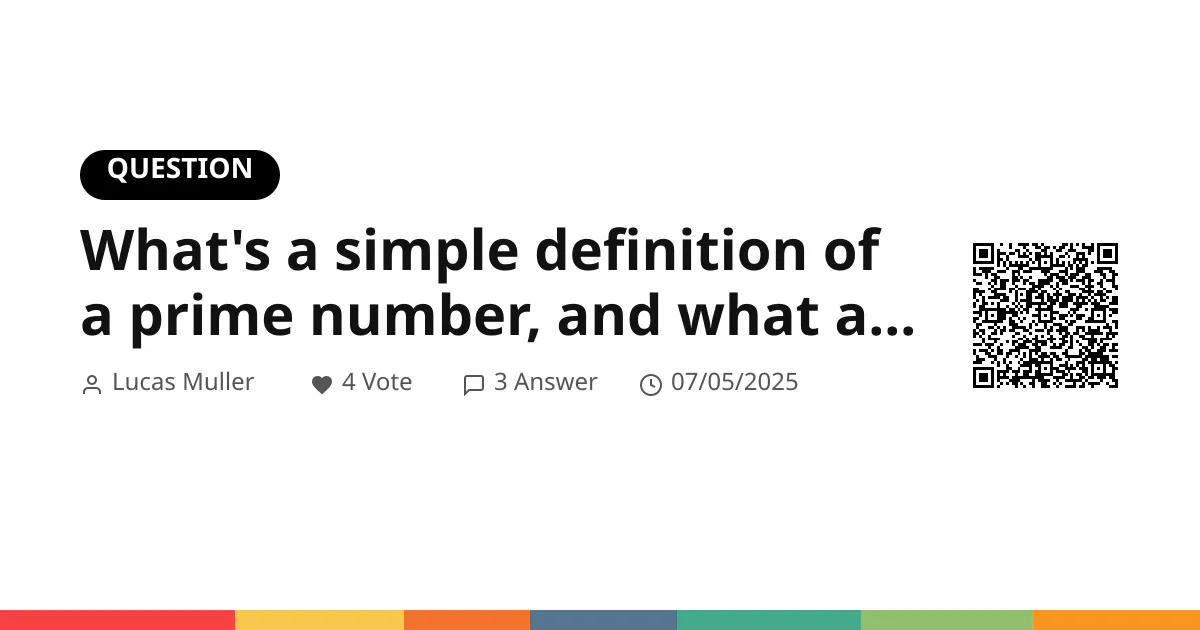
What's a simple definition of a prime number, and what are the primes between 1 and 20?
I'm trying to brush up on some basic math concepts and I'm a little stuck on the formal definition of a prime number. I get the general idea, but I want to be sure I understand it correctly.
Could someone provide a clear, easy-to-understand definition? Also, as a quick check, could you list out all the prime numbers that fall between 1 and 20? I'm especially confused about where the number 1 fits into this.
3 Answers
Hi @Lucas_Muller, happy to help! Here's the definition:
A prime number is a whole number greater than 1 that has exactly two distinct positive divisors: 1 and itself.
The key parts are "greater than 1" and "exactly two divisors." This is why 1 is not a prime number—it only has one divisor (itself). A number like 6 is not prime because it has divisors 1, 2, 3, and 6 (more than two).
Here are the prime numbers between 1 and 20:
- 2
- 3
- 5
- 7
- 11
- 13
- 17
- 19
A helpful way to think about it is that prime numbers are the "building blocks" or "atoms" of all other whole numbers. Any non-prime number (called a composite number) can be broken down into a unique product of prime numbers. This is called prime factorization.
For example, the number 12 is not prime. Its prime factorization is 2 x 2 x 3. The numbers 2 and 3 are prime, so they can't be broken down any further. They are the fundamental components.
The list @Anya_Sharma gave is correct. The primes between 1 and 20 are 2, 3, 5, 7, 11, 13, 17, and 19.
Sometimes it's easier to understand by defining what it is NOT.
Any whole number greater than 1 is either prime or composite.
- A prime number can only be divided evenly by 1 and itself. (e.g., 7 can only be divided by 1 and 7).
- A composite number can be divided by more than just 1 and itself. (e.g., 9 can be divided by 1, 3, and 9).
So, to find the primes between 1 and 20, you just eliminate all the composite numbers. Your list is: 2, 3, 5, 7, 11, 13, 17, 19.